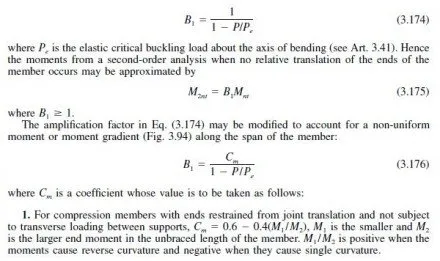End bearings transmit the reactions from trusses to substructure elements, such as abutments
or piers. Unless trusses are supported on tall slender piers that can deflect horizontally without exerting large forces on the trusses, it is customary to provide expansion bearings at one end of the span and fixed bearings at the other end.
Anchoring a truss to the support, a fixed bearing transmits the longitudinal loads from wind and live-load traction, as well as vertical loads and transverse wind. This bearing also must incorporate a hinge, curved bearing plate, pin arrangement, or elastomeric pads to permit end rotation of the truss in its plane.
An expansion bearing transmits only vertical and transverse loads to the support. It permits changes in length of trusses, as well as end rotation.
Many types of bearings are available. To ensure proper functioning of trusses in accordance with design principles, designers should make a thorough study of the bearings, including allowances for reactions, end rotations and horizontal movements. For short trusses, a rocker may be used for the expansion end of a truss. For long trusses, it generally is necessary to utilize some sort of roller support. See also Arts. 10.22 and 11.9.
Inspection Walkways. An essential part of a truss design is provision of an inspection walkway. Such walkways permit thorough structural inspection and also are of use during erection and painting of bridges. The additional steel required to support a walkway is almost insignificant.


